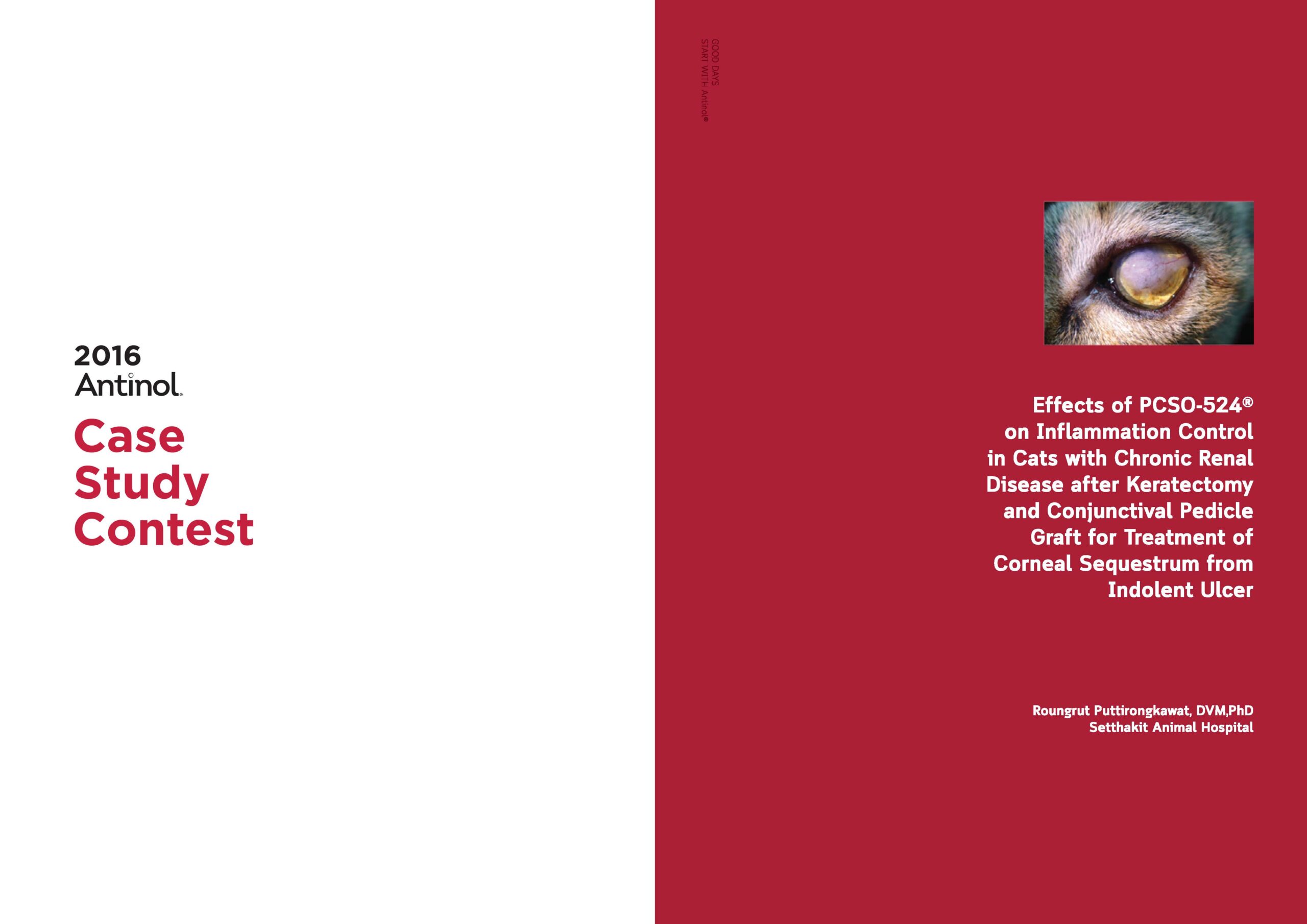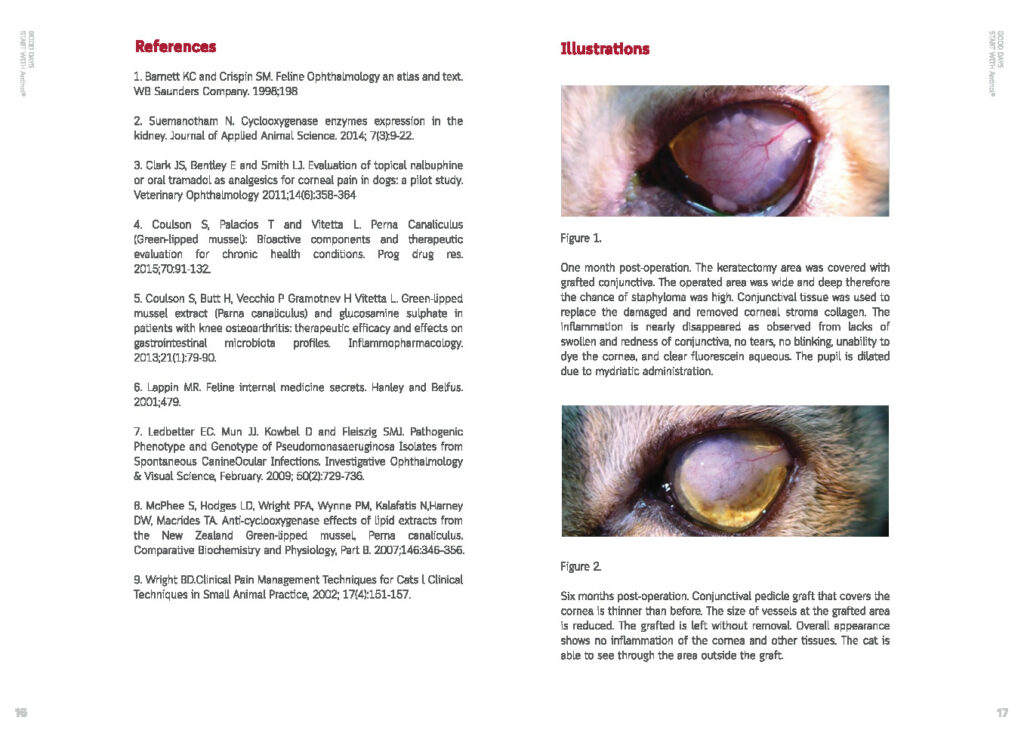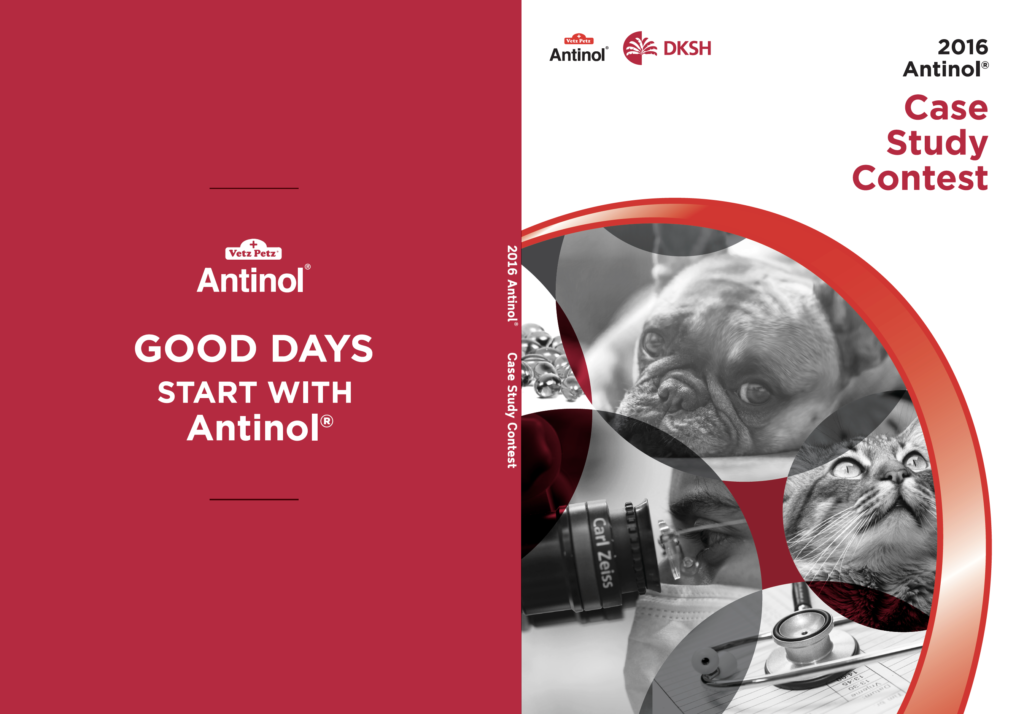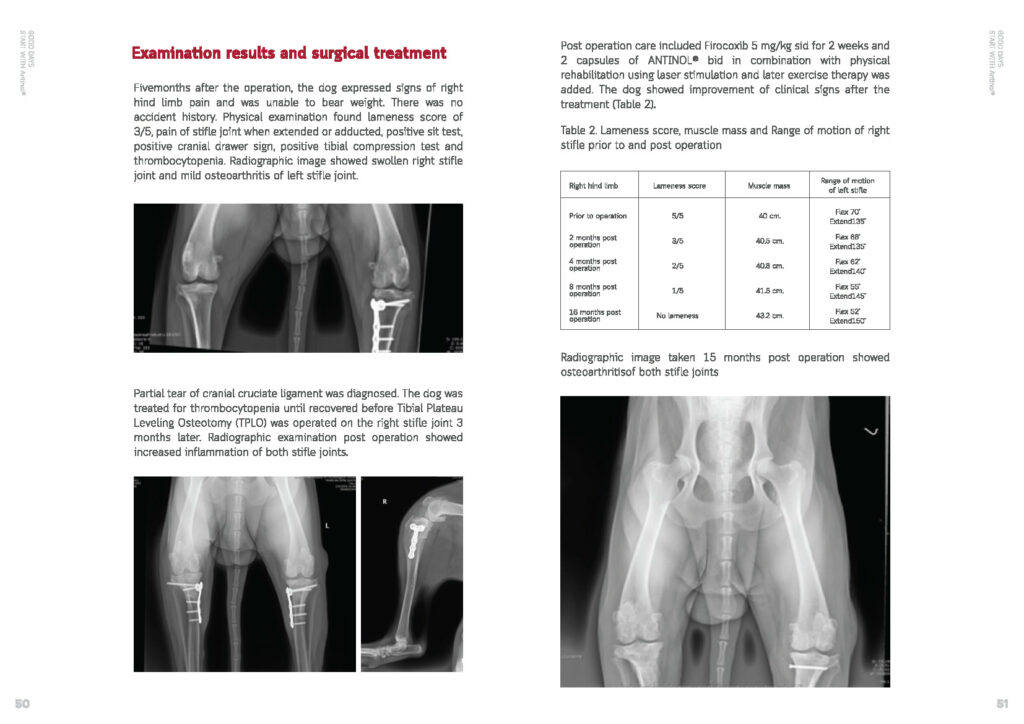Antinol® Latest Studies
Sorted by recent
 Filter Studies by Smart Tags
Filter Studies by Smart Tags
Bone & JointCardiovascularCase Study & ProceedingCatDogEAB 277™EfficacyExotic PetImmunologyNeuro & BehaviorOphthalmologyOralRabbitRenalRespiratoryRodentSafetySkinUTI
Smart Search
Antinol® Case Study Contest 2017

10 Case Reports using PCSO-524® in combination with the treatment regimen for dogs and cats.
Pharmalink International Ltd. and Vetz Petz® would like to thank everyone involved in this 2017 Antinol® Case Study Contest competition and pay homage to our Professors and Veterinarians who have assisted in the judging of the competition.
This 2017 contest was very special with the inclusion of Professor Duncan Lascelles and the wonderful innovation of the live poll that the audience took part in to choose the Vets choice and favorite presentation.




Efficacy of PCSO-524® (VetzPetz Antinol®) for Inflammation Control in Cat with Chronic Juvenile Gingivitis Responsive to Full Mouth Extraction

The cat was having signs of juvenile gingivitis and retained deciduous dentition. Extraction of deciduous teeth were performed when the cat was 11 months old. However, gingivitis was persistent and causing severe halitosis, saliva stain on hair around the lips, drooling, and gingival overgrowth.
The cat was treated with New Zealand green-lipped mussel oil extract PCSO-524® (VetzPetz Antinol®, DKSH, Thailand) 1 capsule daily for 2 months after the extraction of deciduous teeth.
The treatment was able to reduce degree of drooling and gingivitis but could not completely eliminate the disease.
Full mouth extraction was then performed.
Post-operative care included anti-inflammatory drug, Tolfenamic acid (Tolfedine®, Vétoquinol, Best Agro; Thailand) 4 mg/kg for 3 consecutive days, Amoxicillin-Clavulanic acid (Clavamox®, Zoetis, Thailand12.5 mg/kg for 1 week, and New Zealand green-lipped mussel oil extract PCSO-524® (VetzPetz Antinol®, DKSH, Thailand) 1 capsule per day continuously.
The severity of gingivitis was rapidly decreased after the operation and within 2 weeks after the operation, the gingivitis was completely subsided.
The oil extract was administered continuously for 31 months without showing any clinical signs or impaired hematological indicators.




Effects of PCSO-524® (Antinol®) Supplementation during 12 Months Follow-up in 2 Cats with Cystitis and Chronic Renal Disease

Two female cats, spayed, lived in the same house, aged 17 years weighted 2.2 kg and 10 years 4.4 kg, were having chronic renal failure and concurrent cystitis.
Both cats were treated with fluid therapy intravenously in the early period and later subcutaneously. The diet was changed to diet formulated for cats with renal failure (Hill’s Prescription diet k/d) for both cats. Avastamine (RenAvastTM) 1 capsule bid for 1 month, Cystaid® cat (Acetyl 0-Glucosamine: NAG125 mg) l capsule bid for 1 month, and PCSO-524® (Vetz Petz Antinol®) 1 capsule sid continuously were prescribed for the first cat. The second cat received only PCSO-524® (Vetz Petz Antinol®) 1 capsule sid continuously.
The treatment results showed general health improvement, weight gain (2.6 kg and 5.1 kg in the first and second cat, respectively), less hair loss, decreased degree of polydipsia and polyuria, and improvement of blood parameters.
No adverse effect of the continuous treatment was found after 18 and 13 months in the first and second cat, respectively.


Effects of PCSO-524® on Inflammation Control in Cats with Chronic Renal Disease after Keratectomy and Conjunctival Pedicle Graft for Treatment of Corneal Sequestrum from Indolent Ulcer

A female spayed cat aged 13 years with chronic renal disease later affected with indolent ulcer, and consequently followed by corneal sequestrum.
After azotemia was controlled, the cat was surgically treated with keratectomy that used conjunctival pedicle graft for suture closure.
The cat received 4mg/kg Tolfenamic acid (Tolfedine®, Vetoquinol, Best Agro; Thailand) for 3 days, 2.5 mg/kg Doxycycline monohydrate (Vibravet®, Zoetis, Thailand) for 2 weeks and 1 tablet per day of New Zealand Green-lipped mussel extract, PCSO-524® (Vetz Petz Antinol®, DKSH, Thailand) for long-term control of inflammation.
The latter was used as an antioxidant and alternative to Non-steroid, which is a contradiction for chronic renal failure.
The cat showed decreased severity of inflammation, normal clinical symptoms, and fine control of azotemia.
It is concluded that PCSO-524® (Vetz Petz Antinol®) can be used to support long-term anti-inflammation treatment and reduce the damage in cats with medical contraindication due to chronic renal disease


Antinol® Case Study Contest 2016

The 10 Case Studies from Antinol® Case Study Contest of 2016.
1st Winning Awards
1) Effects of PCSO-524® on Inflammation Control in Cats with Chronic Renal Disease after Keratectomy and Conjunctival Pedicle Graft for Treatment of Corneal Sequestrum from Indolent Ulcer
2) The Use of Cyclosporine and PCSO-524® in the Treatment of Alopecia and Dermatitis due to Sebaceous Adenitis in Rabbits
2nd Winning Awards
3) Use of PCSO-524® in Combination with Prednisolone for Treatment of Spinal Cord Injury from Disc Protrusion in Dogs
4) Effects of PCSO-524® on Treatment of Cranial Cruciate Ligament Rupture in Dogs after Tibial Plateau Leveling Osteotomy (TPLO) and Physical Rehabilitation
5) The Treatment of Medial Coronoid Disease in a Seven Months Old Labrador Retriever
3rd Winning Awards
6) A Study of Efficacy and Safety of PCSO-524® (Antinol®l in Treatment of Medial Patellar Luxation and Cranial Cruciate Ligament Rupture in a Yorkshire Terrier Dog
7) Effects of PCSO-524® (Antinol®l Supplementation during 12 Months Follow-up in 2 Cats with Cystitis and Chronic Renal Disease
8) Use of PCSO-524® (Antinol®) for Treatment of Nervous Disorder Caused by Car Accident and Hip Osteoarthritis in Geriatric Cats
9) PCSO-524® as Supportive Therapy for Generalized Alopcia in Guinea Pigs
10) Use of Acupuncture in Combination with PCS0-524® (Antinol®l for Treatment of Hindlimb Paresis in Prairie Dogs




Updated Study Topics
New researches and publications related to PCSO-524® and its result in clnical test submitted by veterinarians on the global conferences every year and the data keeps growing with more studies conducted


 Authors:
Authors: